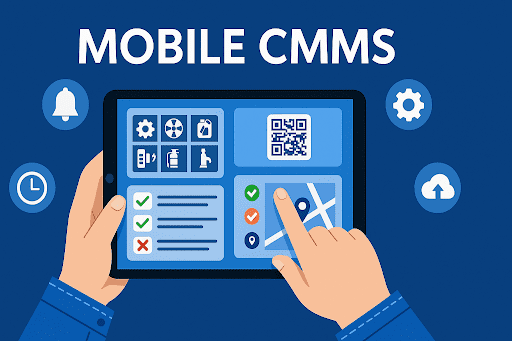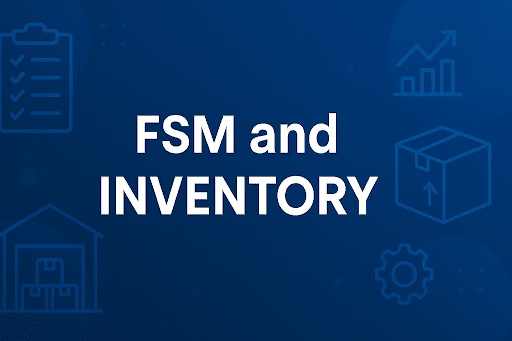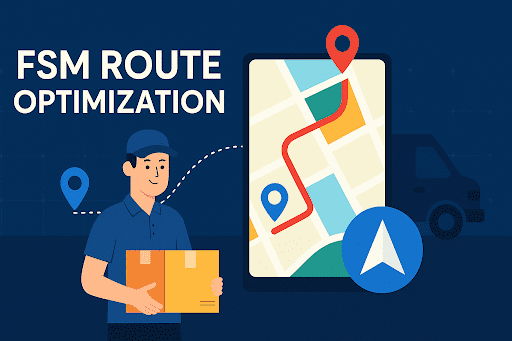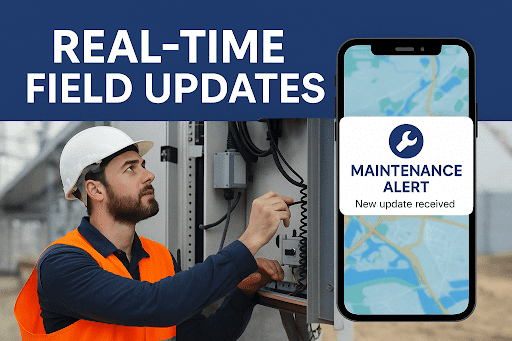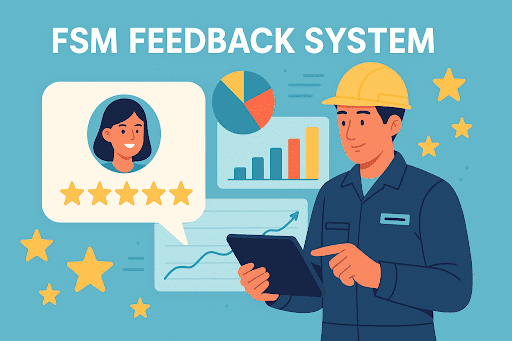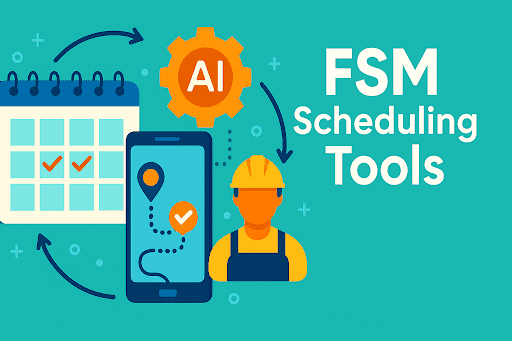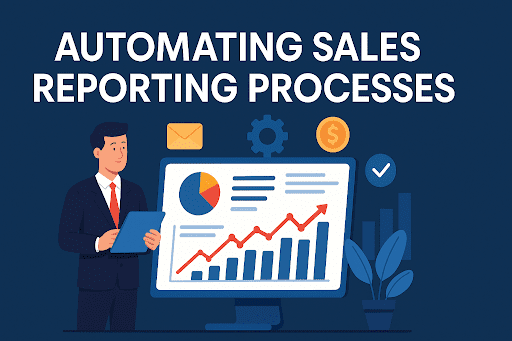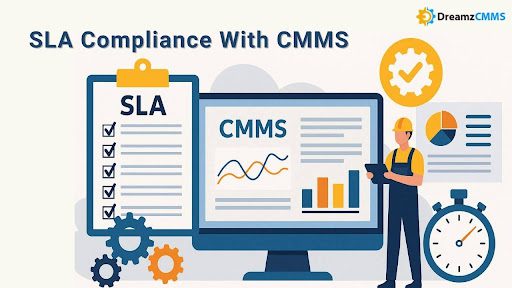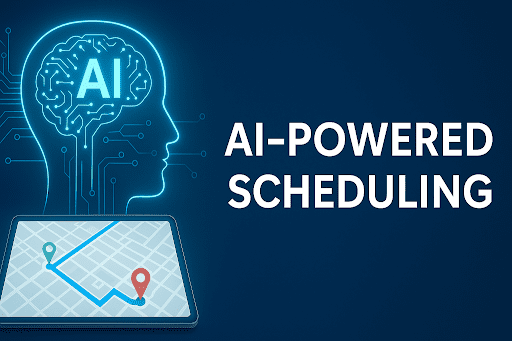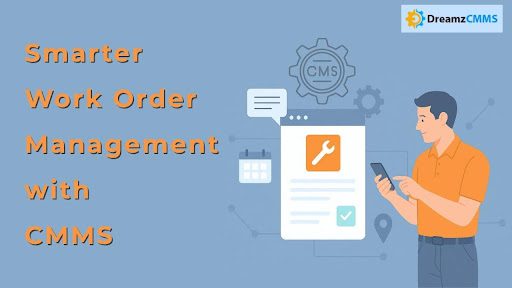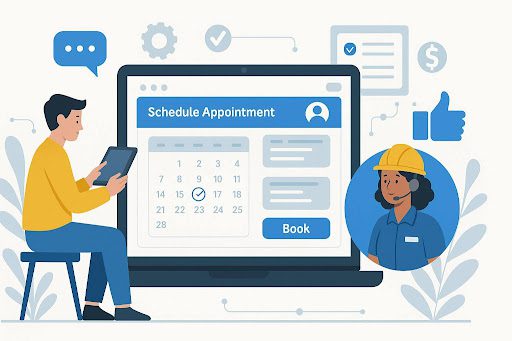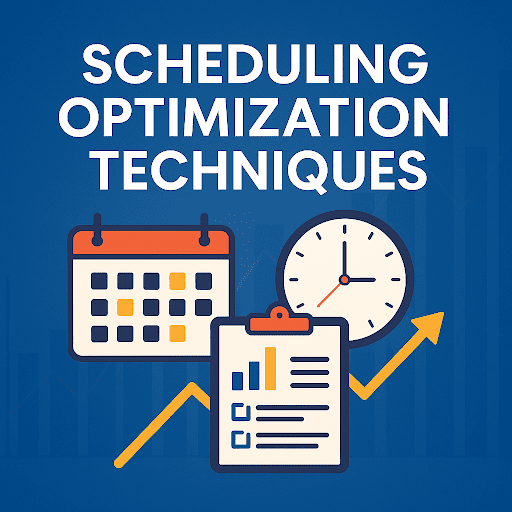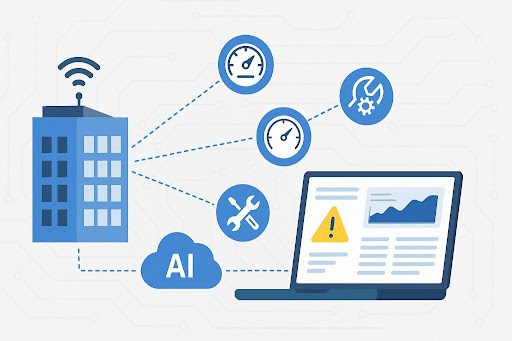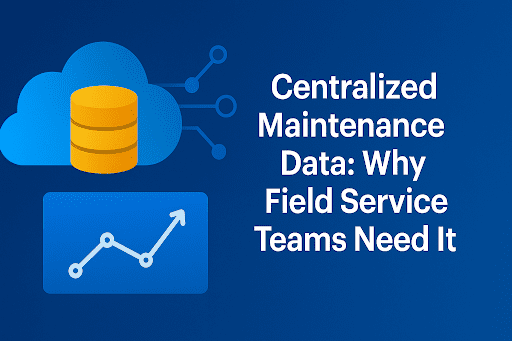 BACK TO Blog
BACK TO Blog
Asset Rental Management
Field Service
Why Field Teams Need Maintenance Scheduling Software
- July 17, 2025
- DreamzCMMS Team
- 12 minutes read

- July 17, 2025
- DreamzCMMS Team
- 12 minutes read
Equipment availability combined with operational status stands as an essential factor for efficient rental operations. Equipment breakdowns which occur unexpectedly together with scheduling mistakes produce two major problems that affect both financial stability and customer satisfaction. Predictive rental scheduling emerges as the solution to this problem. Rental businesses enhance their equipment forecasting abilities through data analysis and scheduling platforms which prevents machine breakdowns while optimizing asset effectiveness.
The solution: Maintenance scheduling software.
The software system enables organizations to switch from repair-based maintenance to scheduled maintenance through its automated features that optimize operational efficiency. The following analysis explains why field teams need a powerful maintenance scheduling software to maintain efficiency.
Optimize Asset Maintenance with Smart CMMS Tools
An intelligent CMMS solution enables organizations to streamline preventive maintenance while tracking asset performance and minimizing unexpected failures. The system enables effortless improvement of uptime and asset lifespan extension.
Explore Asset Maintenance Management Software
What Is Maintenance Scheduling Software?
Organizations can predict maintenance requirements and upcoming rental cycles through the combination of real-time data with historical performance records and analytical insights. Traditional scheduling methods use fixed timelines but predictive scheduling uses dynamic adjustments that incorporate usage patterns along with machine health status and operational requirements.
Core Features of Maintenance Scheduling Software
Rental companies who implement predictive scheduling technology achieve the following benefits:
Work Order Scheduling System
The work order scheduling system produces automated maintenance assignments through its system which eliminates manual task entry requirements. The system delivers services promptly while minimizing human mistakes in task distribution.
Recurring Maintenance Task Manager
Through the recurring maintenance task manager system organizations can set automatic preventive and predictive maintenance schedules that operate according to time-based and usage-based and condition-based criteria. The proactive maintenance approach helps reduce equipment breakdowns and lengthens the operational life of assets.
Mobile Maintenance Scheduler
Through the mobile maintenance scheduler field technicians gain immediate access to their jobs and can submit reports and modify task progress in real-time. The system improves team communication and delivers instant updates about ongoing jobs to managers.
Automated Maintenance Calendars
The centralized maintenance calendars enable teams to view all scheduled and upcoming maintenance operations. The automatic notification system prevents both scheduled inspections and servicing from being forgotten.
Maintenance Team Workload Management
Managers who use maintenance team workload management tools distribute tasks between technicians according to their availability and skill levels. The system prevents staff from getting overwhelmed while distributing work tasks effectively.
Drag-and-Drop Scheduling Interface
Managers can use the drag-and-drop scheduling interface to schedule or change work orders through visual task movement on digital calendars. The easy interface helps organizations reduce scheduling mistakes while decreasing time consumption.
Maintenance Route Planning
The system designs the most efficient routes for technicians through location-based planning that considers traffic patterns. The optimized travel routes allow field teams to perform additional service calls during their working day because they spend less time on the road and consume less fuel.
Real-Time Job Scheduling Updates
Managers can modify task priorities and transfer urgent jobs to other roles through real-time updates of the job scheduling system. The feature provides better service speed and supports SLA requirements.
Cloud-Based Maintenance Software
Cloud-based maintenance software platforms provide protected remote access to scheduling information as well as work orders and service histories. The platform maintains data synchronization between all devices which creates a seamless connection for managers and field team collaboration.
The implemented features enable businesses to enhance operational efficiency while decreasing downtime and improving customer satisfaction levels.
Why Field Teams Struggle Without Maintenance Scheduling Software
Organizations without digital scheduling for their field teams continue to experience multiple recurring operational issues:
1. Reactive Maintenance Overload
A recurring maintenance task manager enables teams to move beyond reactive breakdown fixes to scheduled preventive maintenance. The lack of a recurring maintenance task manager leads to increased asset wear and unplanned downtime.
2. Poor Communication and Scheduling Conflicts
When maintenance assignment tools are absent, miscommunication happens while technicians receive duplicate work assignments and urgent tasks experience delays.
3. Inefficient Route Planning
The lack of maintenance route planning causes technicians to spend more time on travel resulting in wasted fuel and fewer service calls.
4. Inconsistent Maintenance Records
The maintenance of precise service histories becomes impossible with paper-based systems since they fail to provide accurate records of recurring problems or asset performance assessment.
5. Higher Downtime and SLA Breaches
Maintenance planning based on calendars will result in missed service-level agreements (SLAs) which leads to customer dissatisfaction and revenue reduction.
How Maintenance Scheduling Software Transforms Field Operations
1. Optimized Preventive Maintenance Planning
The software performs automated preventive maintenance through its automated maintenance calendars and recurring maintenance task managers.
Example: A facility team can schedule HVAC inspections every quarter, avoiding peak-season breakdowns. Check more on Facility Management Software to see how such systems work for facilities.
2. Real-Time Job Scheduling Updates
Field teams obtain immediate job scheduling updates through real-time notifications that enable them to start urgent repairs right away. The solution enhances SLA compliance and customer satisfaction levels through this functionality.
3. Smart Technician Scheduling and Workload Management
The software for technician scheduling distributes work assignments to personnel based on their qualifications as well as their readiness status and geographic location. Workload management for maintenance teams enables supervisors to distribute workloads evenly thus preventing technician exhaustion.
4. Mobile Maintenance Scheduler for On-the-Go Teams
Through a mobile maintenance scheduler technicians can access work orders while also performing status updates and photo uploads directly from their mobile devices. The system enables fast communication between staff while minimizing paper-based documentation.
5. Drag-and-Drop Scheduling Interface
Through its drag-and-drop scheduling interface managers can easily schedule or modify tasks in a visual manner which decreases both planning duration and human errors during the process.
6. Maintenance Route Planning for Field Service Optimization
The route planning tools of maintenance create optimized travel routes which minimize fuel costs and boost daily service call numbers. The field service schedule optimization practices align with this approach which Field Service Management Software also discusses.
7. Automated Maintenance Calendars for Recurring Tasks
The field teams receive timely notifications about their scheduled preventive servicing and inspections through automated maintenance calendars.
8. Integrated Inventory and Spare Parts Management
The integration between cloud-based maintenance software allows teams to check spare parts availability in real-time thus avoiding stock shortages that delay jobs.
9. Performance Analytics for Continuous Improvement
The system uses KPIs to track task completion rates together with downtime and technician productivity levels. The obtained data enables improvements to both field maintenance scheduling tools and upcoming maintenance approaches.
Key Benefits of Maintenance Scheduling Software for Field Teams
1. Reduced Downtime and Improved Asset Reliability
By implementing proactive scheduling organizations can prevent breakdowns which helps extend asset operational lifespan.
2. Enhanced Customer Satisfaction
Service delivery on time together with decreased SLA violations leads to contented customers.
3. Increased Technician Productivity
Through automation and optimized routing technicians can serve more customers each day.
4. Cost Savings
The combination of reduced emergency repair expenses and fuel cost reduction together with improved spare parts planning methods leads to financial savings.
5. Compliance and Reporting
Digital records make audits together with regulatory compliance processes simpler.
6. Better Team Collaboration
The real-time updates and mobile communication system helps all team members stay aligned.
Maintenance Scheduling Software provides advantages to various industrial sectors
1. Manufacturing
The scheduled maintenance of equipment stops production interruptions from occurring.
2. Facility Management
The maintenance planning system allows facility managers to perform HVAC along with electrical and plumbing service schedules which improve building upkeep. Explore how Facility Management Software achieves this.
3. Healthcare
Regular maintenance of medical equipment is required to protect patient safety.
4. Construction
The reduction of heavy equipment breakdowns helps construction projects to finish according to schedule.
5. Rental Businesses
The planned servicing of assets results in higher revenue generation through improved asset availability.
6. Field Service & Sales Teams
Field sales and service teams enhance their client interactions through the implementation of Field Sales Software.
Choosing the Right Maintenance Scheduling Software
Organizations need to select maintenance scheduling software that delivers maximum efficiency and productivity for their field teams. Field service operations together with preventive maintenance strategies require organizations to choose maintenance scheduling solutions that specifically match these needs from multiple available options.
Key Features to Look For
- Drag-and-Drop Scheduling Interface
The drag-and-drop scheduling interface provides a visual method to allocate work orders. Managers perform job assignment and rescheduling as well as task prioritization through digital calendar dragging of tasks. This user-friendly interface shortens the scheduling process and decreases the number of errors made during planning.
- Cloud-Based Maintenance Software
The cloud-based maintenance software solution provides secure data access from any location which enables managers and technicians to update work orders and check schedules in real-time even when working remotely.
- Smart Maintenance Assignment Tools
These intelligent smart maintenance assignment tools allocate tasks based on technician skill sets, location and availability. This enables the best use of resources and fast service delivery.
- Maintenance Route Planning
The integrated maintenance route planning tools optimize travel paths which results in reduced travel time and fuel expenses and more service calls can be done in a day by technicians.
- Recurring Maintenance Task Manager
A recurring maintenance task manager automates preventive maintenance by scheduling routine inspections, ensuring that assets are serviced on time to avoid breakdowns.
- Mobile Maintenance Scheduler
A mobile maintenance scheduler keeps field teams connected, allowing them to receive real-time job notifications, update task statuses, and upload service reports directly from the field.
Explore More on Advanced FSM and CMMS Tools
The following detailed resources will help you understand how advanced Field Service Management (FSM) and CMMS tools transform field operations.
AI-powered chatbots provide real-time communication improvements between field technicians and managers. The combination of quick service-related queries and automated status updates through chatbots reduces communication delays and improves response times which allows technicians to maintain their work focus.
The implementation of structured feedback systems enables field service performance transformation. The FSM feedback system effectively gathers customer and technician feedback following each job to help managers detect training requirements and enhance service quality while strengthening client relationships.
Modern FSM scheduling tools provide solutions to handle complicated maintenance scheduling needs. The tools perform automated task distribution and optimize route planning to maximize resource utilization which enables field teams to serve more customers with reduced administrative work.
Organizations achieve maximum technician efficiency and workflow optimization and deliver consistent high-quality service through the implementation of advanced FSM and CMMS solutions.
Future of Maintenance Scheduling: AI and Predictive Insights
Maintenance scheduling software will become highly intelligent and data-driven because of Artificial Intelligence (AI) and Internet of Things (IoT) integration. The traditional preventive maintenance follows a fixed schedule, but the modern predictive maintenance uses the real-time equipment data to predict the issues before they happen.
AI-Driven Predictive Maintenance
AI-based analytics processes data from sensors that are embedded in machines and field equipment continuously. The algorithms detect patterns, identify abnormal behavior and predict potential failures ahead of time. The field teams get alerts based on the actual health and performance of the asset rather than fixed service intervals.
For example, vibration sensors on a rotating machine can detect early signs of bearing wear. The system then automatically updates calendar-based maintenance planning, creating a high-priority work order and notifying the technician for immediate action. This proactive approach significantly reduces unexpected downtime and emergency repair costs.
IoT and Real-Time Equipment Monitoring
The IoT-enabled maintenance route planning tracks equipment conditions in real time. When the sensors detect temperature spikes, pressure anomalies, or reduced efficiency, the automated maintenance calendars are updated to reschedule field teams for urgent servicing.
Benefits of Predictive Insights
- Downtime Reduction
AI and IoT-based predictive maintenance enables field teams to identify anomalies before equipment failures occur which allows them to take preventive action. Organizations achieve higher asset availability through proactive problem resolution which leads to significant reductions in unplanned downtime.
- Optimized Technician Workload
Predictive insights optimize maintenance team workload management through task scheduling which considers both urgency levels and equipment actual conditions. Technicians dedicate their efforts to critical tasks instead of following scheduled maintenance which optimizes resource efficiency and minimizes unneeded work.
- Cost Efficiency
Predictive maintenance eliminates the need for frequent routine servicing and minimizes spare parts wastage. Businesses achieve cost savings through component replacement only when necessary which helps them avoid both emergency purchases and expensive last-minute repairs and reduces their inventory expenses.
- Extended Asset Lifespan
Ongoing equipment monitoring helps maintain optimal operational performance of assets. Early detection of equipment wear enables prompt interventions that minimize mechanical stress which leads to longer operational life of vital machinery.
The adoption of AI and IoT technology within cloud-based maintenance software will establish predictive maintenance as a standard feature for field operations. Field teams will advance from traditional preventive maintenance to a fully automated workflow which uses real-time data and predictive analytics to drive every task for maximum uptime and efficiency and cost-effectiveness.
Final Thoughts
For field teams, manual scheduling and reactive repairs are no longer sustainable. Maintenance scheduling software empowers teams with digital scheduling for field teams, ensuring proactive servicing, improved technician efficiency, and optimized routes.
From real-time job scheduling updates to field service schedule optimization, this software transforms field operations, reduces downtime, and enhances customer trust.
If you haven’t yet upgraded to a CMMS for maintenance planning, now is the perfect time to adopt it and give your field teams the tools to perform at their best.
Get Started with DreamzCMMS Today
DreamzCMMS enables you to transform maintenance operations through its intelligent scheduling system and optimized workflows and real-time update capabilities. Your field teams will achieve better efficiency and deliver exceptional service through the ability to reduce downtime.
Ready for More?
Talk to one of our CMMS experts and see how DreamzCMMS can simplify your maintenance operations.
Book a free consultation